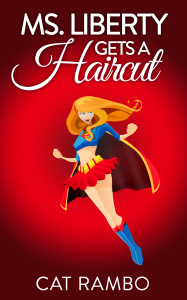 Writers get told they must blog, but not a lot of advice about it. I’ve talked about this more than once, most notably in Do Writers Need to Blog? No. and How to Blog Without Really Trying But Still Managing Not to Be Half-Assed About It. But another thing to consider beyond the content you’re producing is whether or not your readers are finding it.
Writers get told they must blog, but not a lot of advice about it. I’ve talked about this more than once, most notably in Do Writers Need to Blog? No. and How to Blog Without Really Trying But Still Managing Not to Be Half-Assed About It. But another thing to consider beyond the content you’re producing is whether or not your readers are finding it.
If you have a blog, take a moment and type your name into a search engine. If your blog doesn’t appear on the first page of results, you have a problem. The further down the page it is, the harder it is for a reader to find it. Type ‘Cat Rambo’ in and you should see this blog on the top of the list, along with other links that go to me rather than that taxi driver with a cat named Rambo who drives around with his cat in the backseat or the Cat Rambo featured in an article about underwater pumpkin carving.
So — if you’re not on that first page –how do you remedy that? Here’s five ways to make your blog more effective by making it more discoverable when people come looking for you.
Check your front page. Does it include the name you write under? Not just your first name, not a cute pseudonym. And not contained in an image rather than text. If not, please add it.
Make titles meaningful. A title should give a reader a reason to read, often to answer a question that the title has raised. For example: what are the five quick ways I could make my blog more discoverable? rather than “Check this out” or “Here’s something startling.”
Use images. Visual content makes a post more engaging and it provides something when people are sharing it on social media. Visual content gets shared more often than text-only. And a post lacking an image may not be pinnable on Pinterest, which is a valid social media site for authors.
Look at your site on your phone. Google Analytics tells me over half my traffic is readers using their phone to read it; it would be foolish for me not to make it as readable as possible for them. What’s not appearing? What looks weird? Menus that look great on a computer screen and are easy to select and click with a mouse are often much more difficult to navigate on a phone’s smaller touch screen.
Use what’s available. Tags and categories are both tools that search engines incorporate when creating rankings and they make things more discoverable for your readers. The Related Posts plug-in that I use on this blog depends on tags in order to find and display similar content that may intrigue readers of a particular post.
Bonus tip: Link to other posts. Internal links can help your reader find relevant content without leading them away from your site, and they also favorably influence search engines. You might even create pages that consolidate information, like this page of Resources for F&SF Writers. Look at this page — I can count five different ways I’ve done this. Can you find them all?





